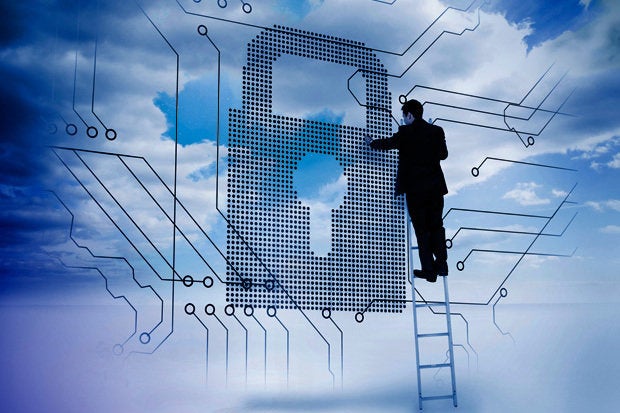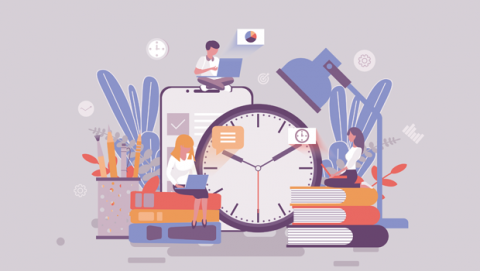Cybersecurity professionals: Positive reinforcement works wonders with users

Sai Venkataraman, CEO of SecurityAdvisor, in his Help Net Security article, The
power of positive reinforcement in combating cybercriminals, said he wants
management to rethink its approach and use positive reinforcement instead. "It's
important to recognize that cognitive bias is part of the human brain's makeup
and functionality," Venkataraman said in his introduction. "While these
subconscious mental shortcuts make it difficult to change behaviors, it's not
impossible." Cognitive bias is hands down the culprit. Charlotte Ruhl, in her
Simple Psychology article What Is Cognitive Bias? defined cognitive bias as: "A
subconscious error in thinking that leads you to misinterpret information from
the world around you and affects the rationality and accuracy of decisions and
judgments. "Biases are unconscious and automatic processes designed to make
decision-making quicker and more efficient. Cognitive biases can be caused by a
number of different things, such as heuristics (mental shortcuts), social
pressures and emotions."
Hackers are using CAPTCHA techniques to scam email users
Researchers found that quantity continues to beat quality in email attacks.
Proofpoint found that the highest number of clicks came from a threat actor
linked to the Emotet botnet. “This total reflects their effectiveness and the
sheer volume of emails they sent in each campaign,” the report notes. The group,
whose infrastructure was knocked out by international law enforcement earlier
this year, has gone virtually dormant since. Cybersecurity researchers also say
that companies shouldn’t underestimate basic cyber hygiene in combatting
ransomware. Hackers are increasingly turning to email to distribute initial
malware that’s used later to download ransomware rather than using email as the
initial attack vector. In 2020, Proofpoint detected 48 million emails that
contained malware that was used to launch ransomware. Top threats detected by
Proofpoint included names like The Trick, Dridex and Qbot. Concerns over
ransomware have only skyrocketed in 2021 after a series of high-profile attacks
against critical industries in the United States.
To Protect Consumer Data, Don’t Do Everything on the Cloud

Restricting private data collection and processing to the edge is not without
its downsides. Companies will not have all their consumer data available to go
back and re-run new types of analyses when business objectives change. However,
this is the exact situation we advocate against to protect consumer privacy.
Information and privacy operate in a tradeoff — that is, a unit increase in
privacy requires some loss of information. By prioritizing data utility with
purposeful insights, edge computing reduces the quantity of information from a
“data lake” to the sufficient data necessary to make the same business decision.
This emphasis on finding the most useful data over keeping heaps of raw
information increases consumer privacy. The design choices that support this
approach — sufficiency, aggregation, and alteration — apply to structured data,
such as names, emails or number of units sold, and unstructured data, such as
images, videos, audio, and text. To illustrate, let us assume the retailer in
our wine-tasting example receives consumer input via video, audio, and text.
Do You Have the Empathy to Make the Move to Architect?
Solution and API architects may focus on different levels of the stack, but also
perform very similar roles. Usually, an architect is a more senior, but
non-executive role. An architect typically makes high-level design decisions,
enforces technical standards and looks to guide teams with a mix of technical
and people skills. “Being an architect takes social skills built on the
foundation of the technical,” said Keith Casey an independent contractor, API
consultant and author of “The API Design Book.” “No matter how good at the
socials you are, you need to have the technical. Have you built a system like
this? Have you shipped a system like this? You can read cookbooks all day, until
you’ve put that in the oven, you haven’t cooked. You actually have to succeed
and fail a few times before you can really offer advice to everyone. Social has
to come after the technical foundation.” While a developer likes to dig deep
into the weeds of a particular product or language, an architect is ready to
broaden their understanding of enterprise architecture and how it fits into the
business as a whole.
California's privacy law raises risks of legal action and fines over data collection

The upcoming California Privacy Rights Act (CPRA) is considered a pioneer in
data privacy and it strengthens the current California Consumer Privacy Act with
stricter rules. Enforcement is also beefed up with the creation of the
California Privacy Protection Agency (CPPA) plus the ability of individual
Californians to file suits against companies for non-compliance. The law was
passed November 2020 and it applies to any company of sufficient size that does
business in California which includes online sales without requiring a physical
location. California residents can request from a company how their personal
data has been used, and for what purpose, and they can request that their
personal data not be sold or demand it be deleted including any data that has
been sold to third parties. Each company must also state if artificial
intelligence was applied to any of their personal data, and if it was, what the
logic was behind the AI. This is essentially asking for companies to reveal how
their algorithms rank the data.
How to Explain Complex Technology Issues to Business Leaders

Business leaders generally trust their tech counterparts to successfully address
and resolve all the necessary technical details. What colleagues most want is
assurance that whatever technology IT is proposing delivers benefits that
outweigh capital and operating expenses. "We need to rise above the technology
itself to explain the impact it will have," Kelker said. Jerry Kurtz, executive
vice president of insights and data, at IT advisory firm Capgemini North
America, also stressed the importance of focusing on the project's potential
business outcome and value. "Rather than getting into the details of the
technology, challenge, or solution in technical terms, showcase the outcomes the
solution can bring and how they will impact the business as a whole," he
explained. "Once this has been accomplished, it's time to develop a roadmap to
reach the agreed upon target state." Using analogies rooted in shared
experiences is a good way to find a common ground with business leaders, advised
Mike Bechtel, chief futurist at business and IT advisory firm Deloitte
Consulting.
How universities can facilitate blended learning through smart campus infrastructure

Smart campus infrastructure doesn’t only provide a reliable solution to short
term connectivity issues, but it also offers long term scalability that can
continuously be tweaked, upgraded and expanded to fit the institution’s needs as
they shift. The ideal scenario would be to have low levels of latency on a high
capacity network, creating breathing room so that any significant uptake in
usage levels wouldn’t cause any issues. Alternative network providers (AltNets)
can overprovision to ensure that this scenario plays out ideally for the
university. By providing much more bandwidth than is needed, bottlenecks can be
removed and users can enjoy a seamless connectivity experience. As broadband
demand inevitably grows over time, optic kit can be upgraded in line with what
is required. ... With Wi-Fi 6 deployed across the entire campus, the technology
can take universities to new heights. Reliable, high speed connections
implemented across the university would enable the student experience to take on
a new form through third party deployments. Suddenly, smart homes can be
utilised effectively across the entire campus.
Recover from ransomware: Why the cloud is the way to go

Recovery in the cloud can happen before you ever need it. It starts with
automatically and periodically performing an incremental restore of your
computing environment to an IaaS vendor. This means your entire
environment—including backups of both structured and unstructured data—is
already restored before it’s needed. Yes, you will lose some amount of data
depending on the window between the last restore and the ransomware attack, so
you will need to decide up front how often you execute the pre-restore process
to minimize the loss. You also need to agree on what amount of data loss is
acceptable, which is officially referred to as your recovery point objective
(RPO). Technically, this type of recovery doesn’t require the cloud, but using
the cloud makes it financially feasible for most environments. Doing it with a
physical data center requires the cosly route of paying for the data center
before you need it. With the cloud you pay only for the storage associated with
your pre-restored images. Cloud-friendly backup and DR products and services can
proactively restore your entire environment to the cloud of your choice—once a
day, once an hour, or continuously.
Hybrid work model: 5 advantages

Organizations with the biggest productivity increases during the pandemic have
supported and encouraged “small moments of engagement” among their employees,
according to McKinsey. These small moments are where coaching, idea sharing,
mentoring, and collaborative work happen. This productivity boost stems from
training managers to reimagine processes and rethink how employees can thrive at
work. Autonomy is the key to employee satisfaction: If you provide full autonomy
and decision-making on how, where, and when your team members work, employee
satisfaction will skyrocket. Autonomy is important for on-site workers, too.
Employees who return to the office after over a year of setting their own
schedule will need to feel that they are trusted to get work done without a
manager standing by. At our company, mutual appreciation and positive
assumptions are guiding principles. When we don’t see each other every day, it’s
easy to make assumptions about other employees – we keep these assumptions
positive, trusting that everyone is doing their best and making responsible
decisions.
A New Approach to Securing Authentication Systems' Core Secrets

With SAML, user management is shifted from the service provider (SP) to an
identity provider (IdP), and authentication and directory are decoupled from the
service. Instead of worrying about dozens of different apps and their
authentication measures, admins configure the IdP to verify all employees'
identities. The SP and IdP only communicate with each other with a key pair: The
IdP signs with the private key, and the SP verifies with the public key. A
Golden SAML attack occurs when the attackers steal a private key from the
identity provider and become a "rogue IdP," Be'ery said. This allows them to
generate arbitrary access SAML tokens offline, within the attackers'
environment. Doing this would let attackers access a system as any user, in any
role, while bypassing security policies and MFA. They could also slip past
access monitoring, if access is only monitored by the identity provider, Be'ery
said. The security community saw this technique in the SolarWinds attack, which
also marked the first publicly known use of Golden SAML in the wild, he
noted.
Quote for the day:
"Great things are not something
accidental, but must certainly be willed." --
Vincent van Gogh
No comments:
Post a Comment